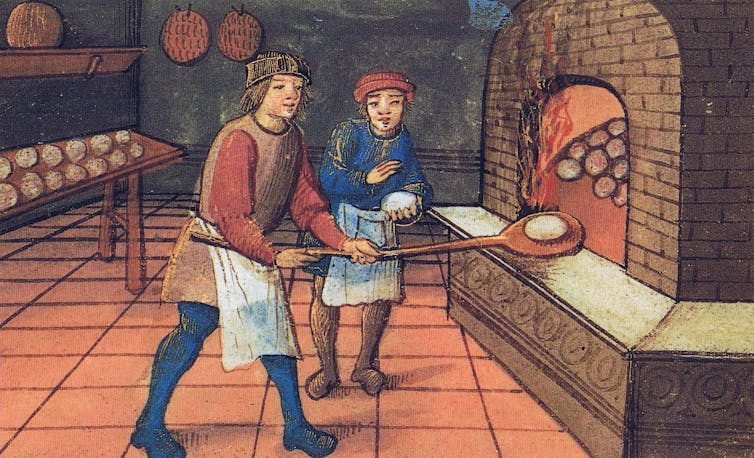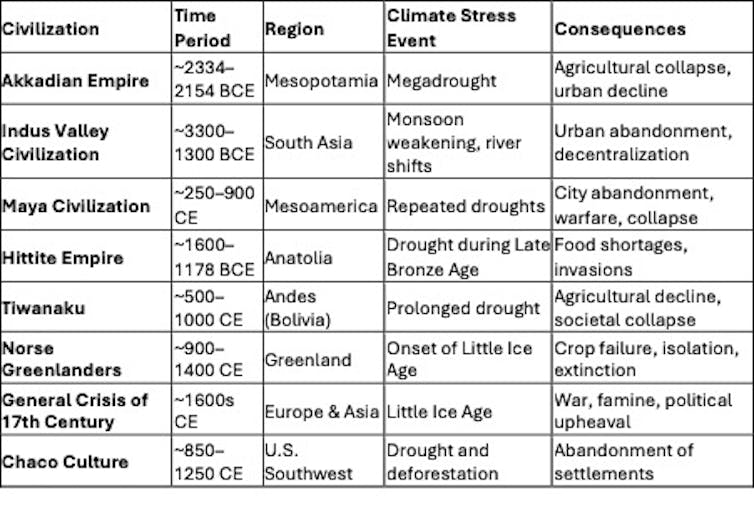Source: The Conversation – UK – By Diane Purkiss, The William F Pollard Tutorial Fellow in English, University of Oxford

“You have to keep beating it for longer,” my grandmother instructed me. “It isn’t pale yet. It’s still too yellow.” I didn’t ask how long this would take. I was nine years old, and I understood what my grandmother meant. You have to keep doing something until it works. It’s like asking: “Are we there yet?”
I watched for the miraculous transformation. The eggs, golden when first beaten, were lightening to a soft lemon colour. The texture was changing. You couldn’t see the sugar anymore; it had looked like sand, but now it was invisible, cloaked in the egg. My grandmother stopped beating, and lifted up the beater. A stream of thick liquid hung down, like the wet sand you used to reinforce a sandcastle. “Yes, that’s enough. Now add the melted butter. Slowly. Then the flour. We’ll need a bit more.”
My grandmother taught me to cook. She never weighed anything. The only measurement she used was a pink breakfast teacup, and it was more a useful scoop than a measure. Instead, she worked towards a desired result. You didn’t cook things for five minutes. You cooked things until you got the result you wanted. The first thing she taught me to make was bechamel sauce. She didn’t call it that. She called it white sauce with flavour. I could make it when I was five, and I still do it the same way.
Her cooking was preliterate, or, more exactly, a special kind of literacy, a grammar of ingredients and heat and air.
I’m a food historian and the author of English Food: A People’s History. I have never found the recipes of the middle ages as difficult to understand as most food historians. Perhaps because they look a little like my grandmother’s instructions.
Cooking in the middle ages

British Library
Take and make a crust in a trap, and take cruddes and wryng out þe wheyze, and drawe hem þurgh a straynour, and put in þe straynour crustes. Do þerto sugar the þridde part and somdel whyte of ayren, and shake þerin blomes of elren, and bake it up with eurose, and messe it forth.
This is a recipe for “sambocade” from a middle ages manuscript held in the British Library. Sambocade is an elderflower cheesecake of sorts. It uses curds – the beginnings of cheese – and the recipe gives quite detailed instructions on how to make them, a method a little like making Greek yoghurt. You add sugar, egg white and elderflowers, along with rosewater. Then you serve it.
A recipe like this is not a series of instructions. It is meant to act as a reminder, a series of quick notes to recall to mind something taught orally – something taught as my grandmother taught me.
Just as Google Maps will not tell me how to walk by putting one foot in front of the other, this kind of recipe doesn’t tell me what I’m looking for or how to achieve it. It doesn’t give exact measurements. It doesn’t really give any measurements at all. But if you made this recipe half a dozen times, you would soon understand the process required. And then, it would be yours, in a way that a recipe tested or created by another cook can never quite be yours.

Bodleian Library
In my kitchen I still keep my mother’s recipe book, a manuscript volume in which she tried to preserve recipes that were gifts from friends. All of it is in her handwriting.
It contains a recipe for cheesecake from the days when cheesecake was a little-known novelty; it notes that the recipe comes from an American friend. It contains exact quantities and exact baking times, although the result is a lot more strongly baked than the majority of cheesecakes now. The exact quantities preserve a memory of the effect that’s difficult to reconstruct from recipes that come from earlier times.
In the same way, I have only my memories of my grandmother’s cooking to preserve what she did; she was barely literate, and her own recipes consisted solely of lists of ingredients. These were kept in a shoe box and after she died, my mother threw it away on the grounds that it was of no possible value to anyone. All the same, every time I make a sponge cake, I say to myself, is it pale enough yet?
Looking for something good? Cut through the noise with a carefully curated selection of the latest releases, live events and exhibitions, straight to your inbox every fortnight, on Fridays. Sign up here.
![]()
Diane Purkiss is affiliated with Keble College, University of Oxford.
– ref. Recipes from the middle ages have much in common with how our grandparents used to cook – https://theconversation.com/recipes-from-the-middle-ages-have-much-in-common-with-how-our-grandparents-used-to-cook-264139
















